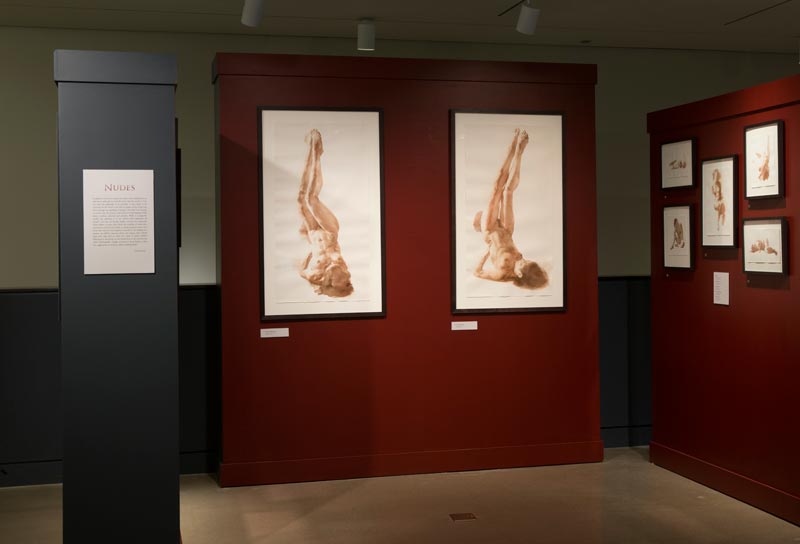Live Models
CR: Once I met you at a studio in New York where you were just finishing up a life drawing session. That was an unusual experience for me as an archaeologist and historian of ancient art. We spend a lot of time looking at statues of nudes, but we are seldom confronted with live models—although of course the Greek and Roman sculptors we study presumably worked with live models just as modern artists do. How is it similar or different to use a statue as opposed to a living person as a model? What kinds of connections do you see between your life studies and your paintings of statues?
WA: When painting statues, I like to see the person within, the model who posed. The same kind of switch that occurs when a painting snaps out of being marks on paper and into three-dimensional illusion can happen when you look at statues and allow them to come to life. The light moving over the surface of the stone softens, the faces fill with expression or gaze ahead with compelling blankness. Similarly, I often see the live models as statues and paint them as such. The utter immobility of statues is a double-edged sword: the luxury of having limitless time can lead to an overworked painting, particularly a watercolor, which cannot be changed or erased. On the other hand, it is quite easy to start anew with a statue, to recreate identical light and angle and try again. Painting live models is the opposite: they move, breathe, and often cannot hold a pose for long. They are also expressive, surprising, inspiring, and alive. Symbolically, the statues represent eternal life, while painting models is a way of stopping time, of capturing the way a shadow falls, a memory, or youth. Painting the models helps to keep the paintings of statues alive and light.
When I was at the École des Beaux-Arts in Paris, I was working with models who had become union workers during the revolts of 1968, which meant that they had been posing for 20 years. Each one had a repertoire of a few standard poses, and thousands of drawings were made of the same model in the same pose from slightly varying angles. This was excellent training for seeing beauty in the overlooked, the ordinary, for focusing on the light, the atmosphere, “mark-making.”
Now, when I work with models, I almost never give them instructions. The only indication they have is the duration of the pose, from 30 seconds, to 5 and 10 minutes, to half an hour. This way the models enter into their own reality, and their poses are natural, imaginative, and expressive. One of my models used to reenact the poses she had seen on billboards while coming to my studio. Another became the animals of the theatrical piece she was performing. Yet another asked, at the end of the session, whether anyone had guessed what he was doing. He had taken the poses of the 12 Stations of the Cross.
Other models take inspiration from old life drawings or classical statues. I often do not manage to guess, nor does it occur to me to guess, what sources of inspiration my models are drawing upon; my inspiration is their presence before me—somewhat like the statues, made at a different era for a different purpose. The poses and the quality of the painting do not necessarily go hand in hand. It is possible for the models to take a really fantastic pose and for the painting not to go well, for whatever reason, since it is all fairly hit-or-miss. It is also possible, however, to do a really great picture of a really boring pose. But the best possible situation is when the models take a fantastic pose and I am able to capture it; then it sometimes feels like magic, as though the painting is just creating itself—very exciting.

